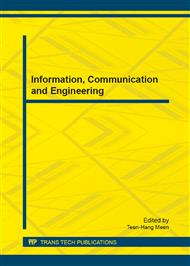p.293
p.299
p.305
p.310
p.316
p.322
p.328
p.334
p.339
Investigating the Typical Affective Meanings Influencing Interactivity of Interactive Products for Chinese-Speaking Users
Abstract:
The purpose of this paper was to find out the typical affective meanings for interactive products for Chinese-speaking users. The affective meanings are affective adjectives evoked from interactive products. They are used to investigate the structure of emotional responses to objects, or applied to Kansei engineering to establish the connection between physical property spaces and semantic spaces. However, the affective meanings used in previous studies including the structure of emotional responses and Kansei Engineering were varied both in number and adjectives they used. Over 628 adjectives collected from studies related to emotional responses and Kansei Engineering, and websites were condensed into 298 adjective pairs by five Chinese teachers teaching at Junior high schools in Taiwan. Semantic differential approaches were used to rate 16 windows media player skins with these adjective pairs. Furthermore, Item analysis was used to remove the affective meanings with low discrimination. Factor analysis was performed to reduce the number of affective meanings by discovering the words with similar response patterns. The outcomes showed forty-two typical affective meanings which represented the main factors after Factor analysis. These typical affective meanings were suggested as the affective meanings to describe interactive products.
Info:
Periodical:
Pages:
316-321
Citation:
Online since:
February 2013
Authors:
Keywords:
Price:
Сopyright:
© 2013 Trans Tech Publications Ltd. All Rights Reserved
Share:
Citation:


